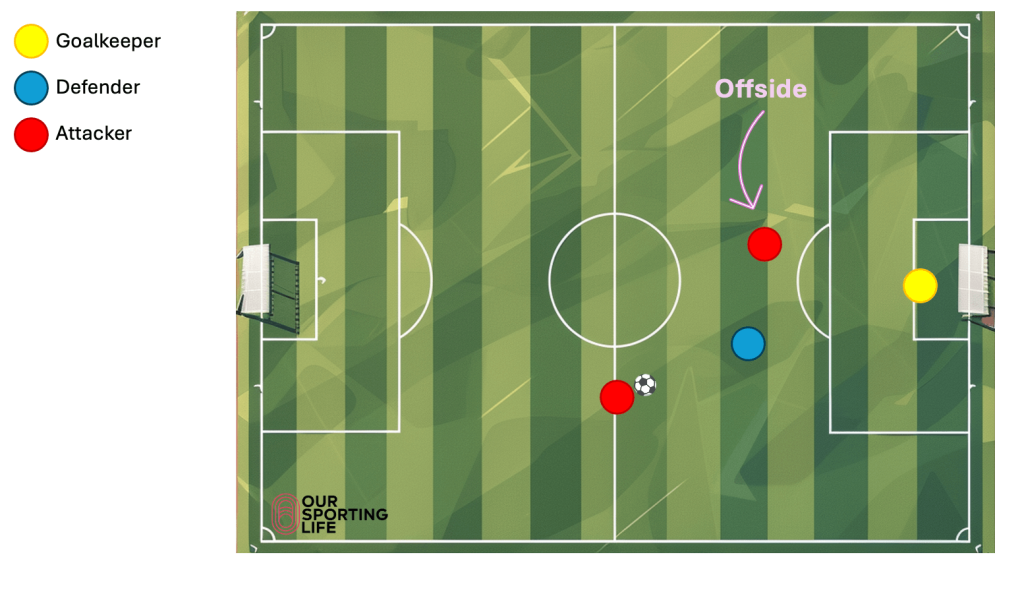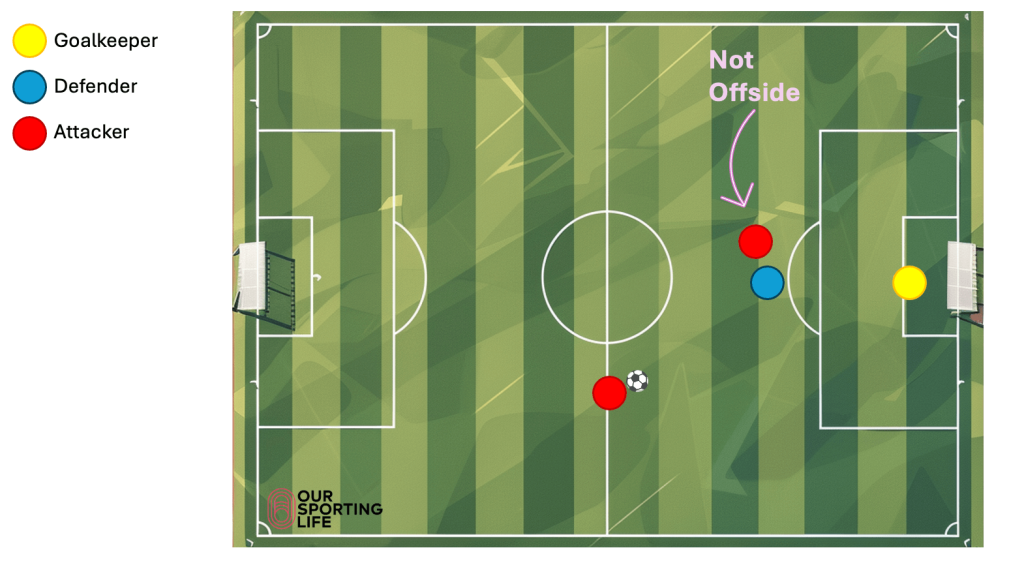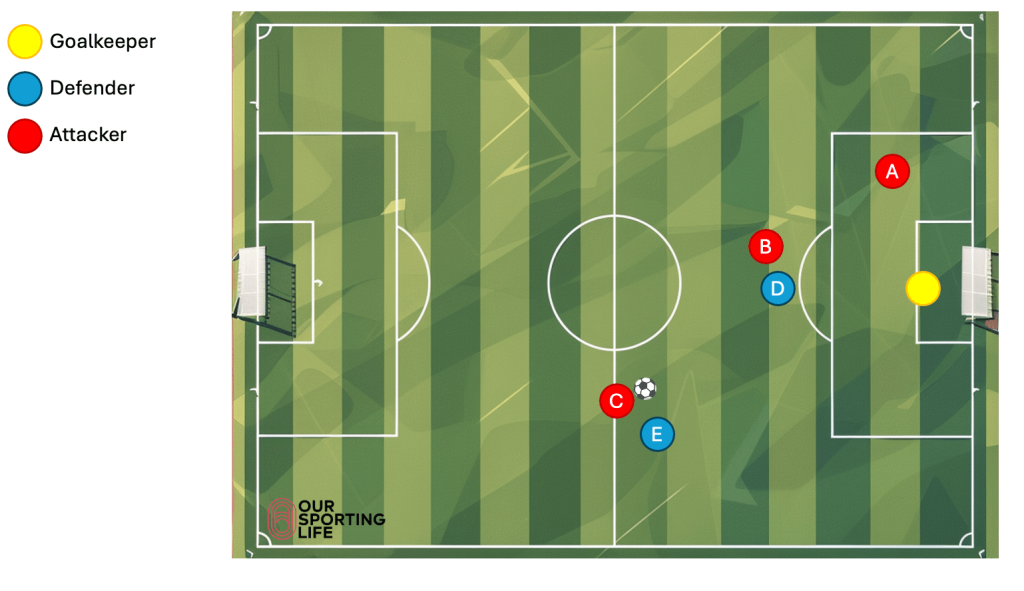When even the pundits, pros and officials often rely on replays to determine whether something is “offside” in football, I think it’s fair for us mere amateurs to be confused over the rules too.
For those new to football, the offside rule can seem intimidating to understand. So let’s explain it in the simplest terms in this guide to offside for dummies (not that I’m calling you dummies, of course).
What is the Offside Rule in Football?
The FA’s official explanation of the offside rule is:
A player is in an offside position if: any part of the head, body or feet is in the opponents’ half (excluding the halfway line) and any part of the head, body or feet is nearer to the opponents’ goal line than both the ball and the second-last opponent
FA Law 11
In other words, you are “offside” if you are in your opponent’s half (so the half of the pitch where you are scoring) and there are not two opposing players closer to the goal than you.
The goalkeeper counts as one of those players!
So in most cases, though not all, assuming the keeper is on the line or close to the line, it’s simply about ensuring that at the point you receive the ball, there’s at least one other opposition player level with you or closer to the goal than you.
Once you receive the ball, you can freely run forward with it and of course attempt to get past defenders.
Offside Position Examples Diagrams
Here’s an example of a very simple offside position:

Here, the team attacking is in red.
The player with the ball, if they pass it now to the other player, that other player will be offside because there is only one opposition player (the goalkeeper) level or closer to the goal than themselves.
However, look at this:

By the defender now being marginally closer to the goal, the first player can pass the ball and the second one can receive it with no offside concerns.
So this, in its simplest form, is how the offside rule works.
If you
“Interfering in Play”
Standing in an offside position itself isn’t an issue if you are not interfering in play.

In the diagram above, player A is clearly in an offside position. However, unless player A receives the ball, touches the ball, interferes with an opponent or attempts to receive the ball, he or she is likely to be deemed as not interfering with play.
Therefore, if player B (who is not offside) receives the ball, shoots and scores, it counts.
Offside Position vs Offside Offence
You can be standing in an offside position (like player A in the last example) but not be committing an offside offence.
So if you’re not interfering with play, simply standing in an offside position is not a problem.
What Happens if you Commit an Offside Offence?
If you do commit an offside offence, your opposition will receive an indirect free kick.
When Can You NOT Be Offside?
Some examples of when you cannot be offside are:
There are specific situations where it is not possible to be offside:
- Goal Kick: You cannot be offside directly from a goal kick.
- Throw-in: You cannot be offside directly from a throw-in.
- Corner Kick: You cannot be offside directly from a corner kick.
- Own Half: If the player is in their own half of the pitch when the ball is played, they cannot be offside.
Offside “Counts” The Moment the Ball is Played
Offside counts at the moment the ball is played. So if you’re standing in an onside position when your teammate passes, you can move ahead of the defender the moment the ball leaves your teammate’s foot. Offside counts at the moment the ball is played.
It’s Not that Complex Really
See, understanding the offside rule isn’t that complex is it? But for those of us in grassroots, where the game is usually played with a referee, sometimes no linesmen and certainly no VAR, don’t be surprised if the official’s decisions are not always 100% spot on!
When Does Offside Come into Play in the Junior Game?
Currently, offsides come into play at u11, when children start to play in a 9v9 format.
Note though that with the introduction of a u7 3v3 format coming in the 2025/2026 season, 9 a side will not begin until u12s which will push back the introduction of offsides by a year.
Explaining offsides to children early is helpful for this transition and consider rewards like enamel pin badges, patches or other memorabilia to “certify” players once they’ve got their heads around it!
Personally, I’ve always found the kids figure it out quicker than adults new to football!






